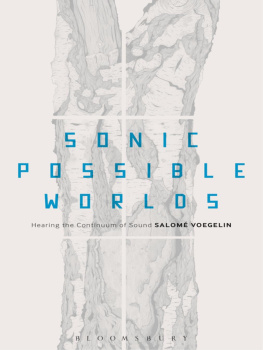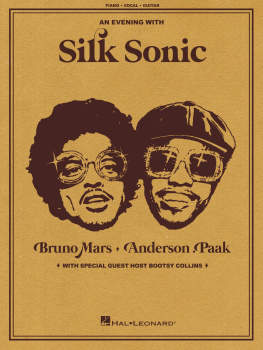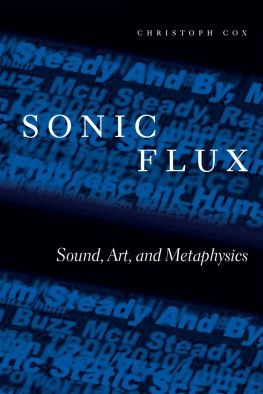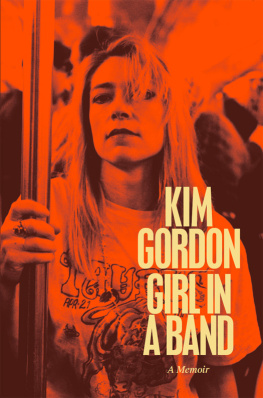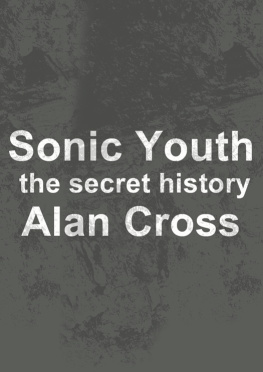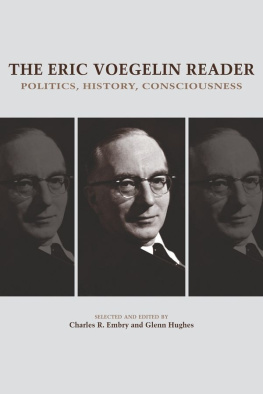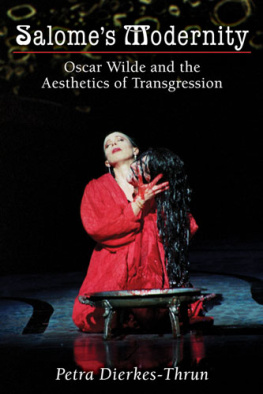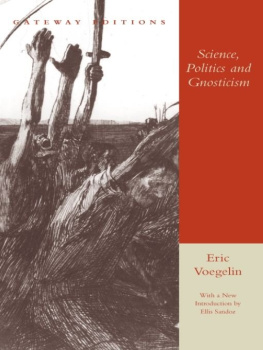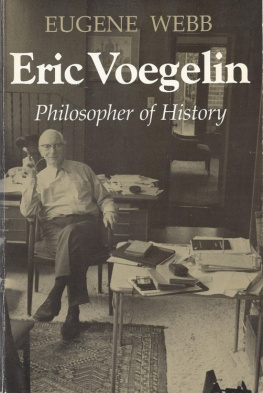Salom Voegelin - Sonic Possible Worlds
Here you can read online Salom Voegelin - Sonic Possible Worlds full text of the book (entire story) in english for free. Download pdf and epub, get meaning, cover and reviews about this ebook. year: 2019, publisher: Bloomsbury, genre: Romance novel. Description of the work, (preface) as well as reviews are available. Best literature library LitArk.com created for fans of good reading and offers a wide selection of genres:
Romance novel
Science fiction
Adventure
Detective
Science
History
Home and family
Prose
Art
Politics
Computer
Non-fiction
Religion
Business
Children
Humor
Choose a favorite category and find really read worthwhile books. Enjoy immersion in the world of imagination, feel the emotions of the characters or learn something new for yourself, make an fascinating discovery.
- Book:Sonic Possible Worlds
- Author:
- Publisher:Bloomsbury
- Genre:
- Year:2019
- Rating:3 / 5
- Favourites:Add to favourites
- Your mark:
- 60
- 1
- 2
- 3
- 4
- 5
Sonic Possible Worlds: summary, description and annotation
We offer to read an annotation, description, summary or preface (depends on what the author of the book "Sonic Possible Worlds" wrote himself). If you haven't found the necessary information about the book — write in the comments, we will try to find it.
Sonic Possible Worlds — read online for free the complete book (whole text) full work
Below is the text of the book, divided by pages. System saving the place of the last page read, allows you to conveniently read the book "Sonic Possible Worlds" online for free, without having to search again every time where you left off. Put a bookmark, and you can go to the page where you finished reading at any time.
Font size:
Interval:
Bookmark:
Sonic Possible Worlds
Sonic Possible Worlds
Hearing the Continuum of Sound
SALOM VOEGELIN

CONTENTS
This journey through Sonic Possible Worlds would not have been achievable without the support of family, friends, and colleagues. I am grateful for the many stimulating conversations and debates with peers, students, and friends, and am thankful for all the guidance, feedback, and criticism that have advanced my ideas and enabled this endeavor.
I want to especially thank David Mollin for his love and support and our ongoing collaboration, which challenges my habits of listening and sound making. I am immensely grateful also to Angus Carlyle and Daniela Cascella for their close reading of the manuscript and their invaluable advice for its revision. I want to thank Cathy Lane for always being inspiring and encouraging, and David Toop for many conversations and much listening. I am grateful for the continuing exchange on sound art and music with Thomas Gardner, and appreciative of the research environment at CRiSAP (Centre for Creative Research in Sound Arts Practice) and of my colleagues at LCC (the London College of Communication), Chris Petter, John Wynne, Nye Parry, Ximena Alarcn, Ed Baxter, and Peter Cusack, whose work and ideas nourish and challenge my own. I want to thank Lou Mallozzi for giving me the opportunity to publicly test my first sketches of a sonic possibilia, Marcel Cobussen for enabling the publication of a sonic fiction, and Brandon LaBelle for inviting me to present some later thoughts. I am very thankful for all the opportunities I had to try my ideas in public and am very conscious of the importance that the work of the sound arts students at LCC had on the development of my writing, and hope that in return the ideas put forward here will help them to further their own research and practice.
I am grateful for the vicinity of Anne Hilde-Neset in the early stages of my research, and for the encouragement of Allen S. Weiss and the debates with Christoph Cox. I am especially thankful also to Chris Watson, Claudia Molitor, Francisco Lpez, Clare Gasson, Mark Peter Wright, Mikhail Karikis, and Signe Lidn for their time and patience clarifying and discussing their pieces with me, and want to mention all the artists whose works are discussed in the book for inspiring my listening and writing through their sounds. Finally, I also would like to thank David Barker and Ally Jane Grossan of Continuum, Bloomsbury, for trusting me to write this book, and for giving me the opportunity to put these ideas into the public realm.
My room
has sound behind its walls, under its floorboards and on top of its ceiling. They make it shrink and expand, move and be still. What is in the room is visible, present, objectively here. The sound is invisible, not here, but present all the same. It is generated in my subjective hearing of it: rushing into the objective and changing what I see. The walls are less stable in sound, wobbly even, permeable, letting things in and out; testing notions of intimacy, neighbourliness and safety. The visual room is the set on which sound plays invisible narratives: some sinister, some cheerful, some unnoticed. Unseen protagonists, who might really be there or just invented by me, play out fantastic scenarios that might be real, involving alien space ships, cats, dogs and microwaves.Anything can happen.
SOUNDWORDS.TUMBLR.COM January 28, 2011, 9:00 p.m.
My textual phonography produces not a recording of the heard but of listening, which produces another sound in the imagination of the reader that is not the sound I heard but the sound generated in her action of perception of reading about sound. The recording in words of what I heard does not invite the recognition of an object or a subject, but triggers a generative interpretation: the production in the readers auditory imagination of what it might have been that I heard, and what he might remember to have heard, or might go on to hear as a possibility of my words and her present auditory environment.
This phonographic writing notates not a solipsistic listening however. Listening is never separate from the social relationships that build the fleeting circumstance of hearing. Rather, listening inhabits that circumstance, and thus My room transcribes not the heard in isolation but composes its sociality: the hearing of myself in the social context of a room, my soundscape, a position and its consequence, which these words are trying to reflect on and share.
My writing might not achieve this sociality but the impetus of its practice lays in that aim: its motivation comes from the desire to share the heard without reducing it to the description of its source or the structure of a pre-given register. Instead, I use words to grant you access to sounds present unfolding, for you not to hear the same, but to hear its possibilities.
Writing about the possibility of sound is a constant effort to access the fleeting and ephemeral, that which is barely there and yet influences all there is. Sound is the invisible layer of the world that shows its relationships, actions, and dynamics. To write about it is to write about the formless, the predicative, that which invisibly does what we think we see but which struggles to find a place in articulation while what we think we see slides effortlessly into language in the certain shape of the noun. Sounds grammatical position as the attribute, the adjective and adverb, keeps it on the surface and holds it in a visual paradigm, when in reality its materiality is much more subterranean and mobile.
Sound is the thing thinging, a contingent materiality that is not captured as noun but runs as verb.
Listening to sound not as the attribute of the visible but as the action of its production descends deep into the core of the visual world, reaching beyond its certain shape into a formless form that is neither object nor subject but the action of their materiality formlessly forming as liquid stickiness that grasps me too but leaves no trace. The sonic trace is mute. Sound generates the present from the memory of the past and through the anticipation of the future, but it is always now. To grasp this fleeting now in words and make it be significant, as this book aims to do, I need to find words that do not precede nor trace its passing, but generate it presently; and I have to prompt the reader to listen to the now of my writing with the same generative curiosity and unprejudiced desire.
My desire to write about sound and for it to be read in a way that triggers listening comes from the conviction that in its invisible mobility, in its sticky and grasping liquidity there is something that augments, expands, and critically evaluates how we see the world and how we arrange ourselves to live in it. This belief is what motivates my aim to make the invisible materiality of sound and our own sonic subjectivities accessible, audible, and thinkable through wordsto practice a writing that comes from listening and works toward a sonic sensibility that renews and pluralizes philosophy and epistemology. Such writing has not only an aesthetic but also a social and political significance in that it has an impact on ideas about what the world and what the subject is presumed to be and what else they could be.they could be and how we could live in a sonic possible world, and how we could include sounds invisible formlessness in a current realization and valuation of what we understand to be the actual world.
Listening we will not automatically get to a better world, or a better philosophy. Sound does not hold a superior ethical position or reveal a promised land. But it will show us the world in its invisibility: in the unseen movements beneath its visual organization that allow us to see its mechanism, its dynamic and structure, and the investment of its agency, which might well be dark and forbidding. A sonic sensibility reveals the invisible mobility below the surface of a visual world and challenges its certain position, not to show a better place but to reveal what this world is made of, to question its singular actuality and to hear other possibilities that are probable too, but which, for reasons of ideology, power and coincidence do not take equal part in the production of knowledge, reality, value, and truth.
Next pageFont size:
Interval:
Bookmark:
Similar books «Sonic Possible Worlds»
Look at similar books to Sonic Possible Worlds. We have selected literature similar in name and meaning in the hope of providing readers with more options to find new, interesting, not yet read works.
Discussion, reviews of the book Sonic Possible Worlds and just readers' own opinions. Leave your comments, write what you think about the work, its meaning or the main characters. Specify what exactly you liked and what you didn't like, and why you think so.

